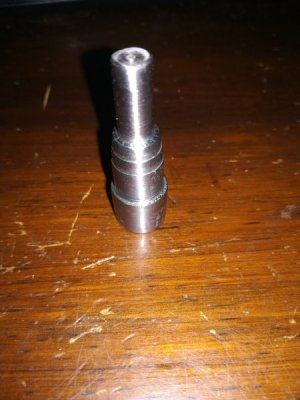You worry entirely to much about tool height, I set the tool in the video with an 18" steel ruler, on this lathe the spindle is 12 7/16" above the ways.Been a lot of discussion on this topic lately . A easy was to take the guesswork out of being on center ........... Take a piece of round stock and drill a 1/4" hole thru it , drill and tap 2 holes in it and put a 1/4" rod thru it . Set up a turning tool and find dead nuts center taking face cuts and adjusting . When you're there , set that little piece you just made on your tool tip and set it to a piece of flat stock across your ways or carriage etc . Lock it up and keep it on the lathe forever or until you can afford a height gage . It's an easy tooling aid .
The ONLY time that I find it important to get the tool on center within .005" is when parting to 0 in the X axis.
This is a smaller lathe that is 2axis CNC (I should say that it is 2.5 axis because it will thread, it will also operate all 3 axes when taper threading) the C axis is not under full control however.
I set the turning tools with a ruler and the parting tools by trial.


